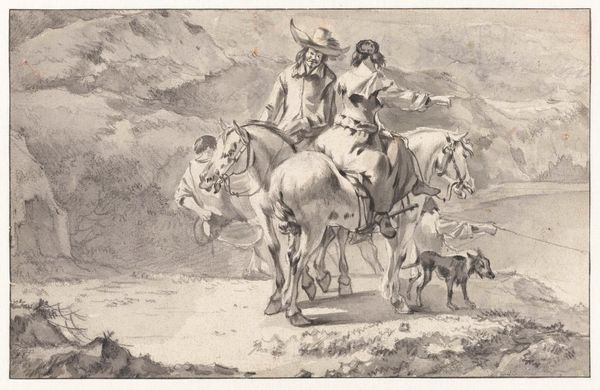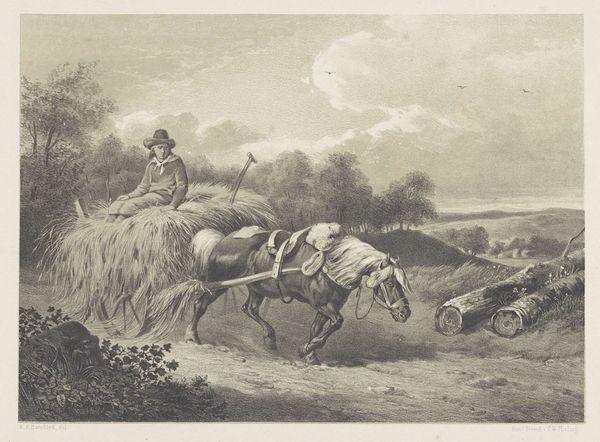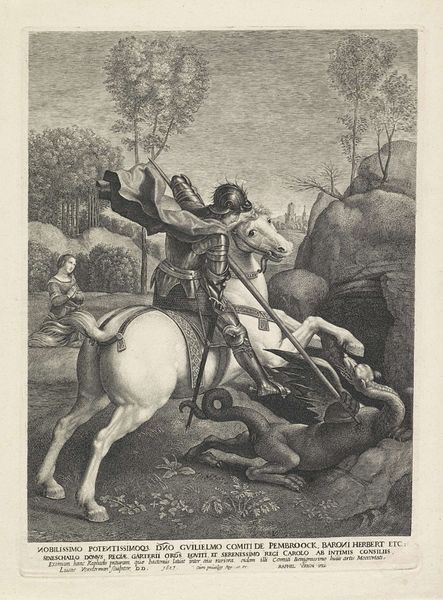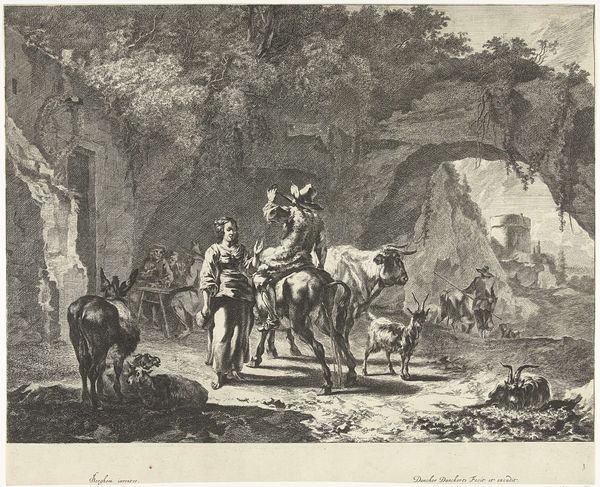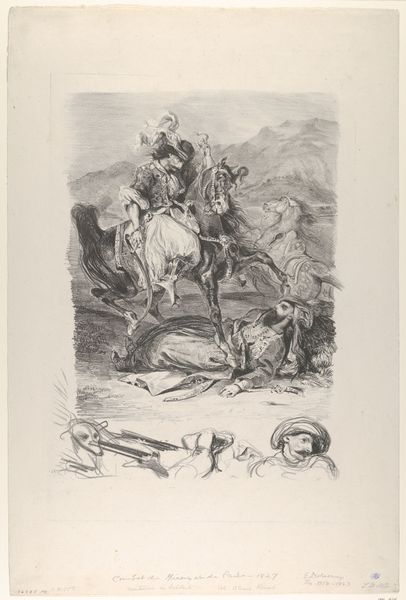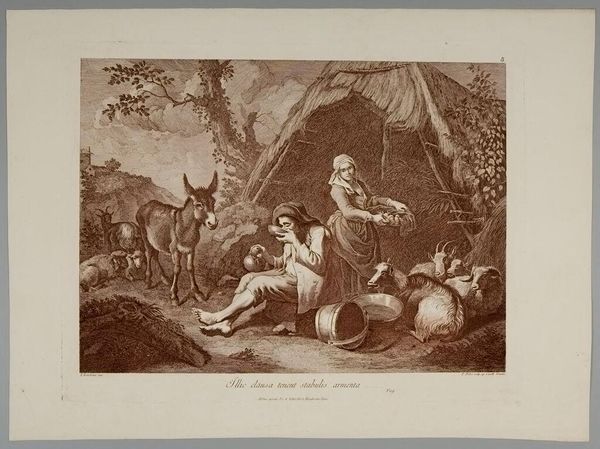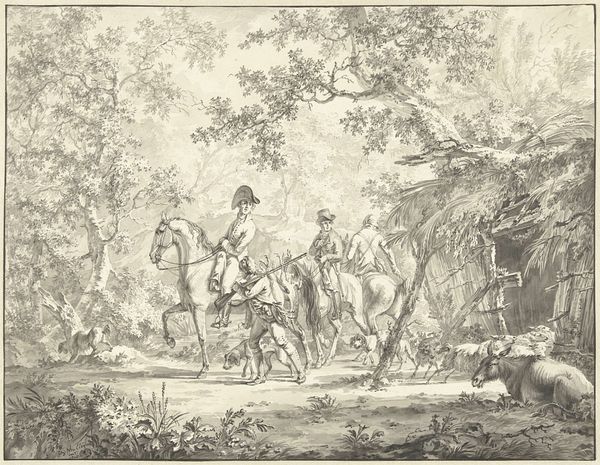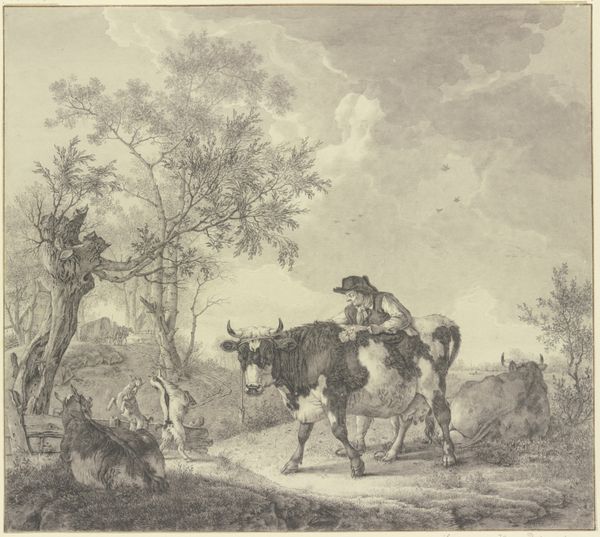
Maria van Bourgondië valt van haar paard, 1482 1842 - 1887
0:00
0:00
psteendrukkerijvanblommers
Rijksmuseum
Dimensions: height 186 mm, width 233 mm
Copyright: Rijks Museum: Open Domain
Curator: Let's discuss this evocative 19th-century lithograph print from the Steendrukkerij van P. Blommers depicting "Maria van Bourgondië valt van haar paard, 1482" now held at the Rijksmuseum. It's an action scene unfolding within a verdant landscape. Editor: My immediate impression is of a frantic chaos rendered with surprisingly delicate lines. The pale palette and swirling composition generate a feeling of unease despite the seeming romanticism of the setting. Curator: Romanticism indeed! The subject matter clearly feeds into the Romantic obsession with dramatic historical events and personal tragedy, imbuing the image with great emotional power. Consider the prominence given to the white horse. The white horse throughout European and earlier mythologies often symbolizes purity, but in darker tales they presage death or bad fortune. Editor: Interesting observation. Maria's fall undoubtedly altered the trajectory of the Netherlands and Habsburg dynastic trajectory as such. The composition underscores vulnerability; observe how the dogs scatter while the figure in motley appears to direct our gaze towards the implied threat—a complex power dynamic plays out on multiple levels here. She's an extremely privileged woman undone. Curator: True! The figure in motley certainly holds symbolic power as a character historically exempt from rules. We see that this tragedy is also witnessed. Editor: This scene reflects a larger commentary on female sovereignty as particularly precarious; any misstep becomes instantly, and publicly, consequential. What strikes me is the very real pain depicted on the figures: this idealized image conceals much in order to serve dominant historical narratives of progress and patriarchy. It elides very tangible sufferings. Curator: You raise an astute point regarding narrative construction. While romanticized in style, the imagery resonates on a psychological level as well—our universal fear of loss of control, both physically and of one's fate. The work reminds us to examine the fine line between visual pleasure and painful histories. Editor: Ultimately, I'm reminded of how artworks like these offer more than pretty scenes; they represent charged intersections of personal narrative and overarching cultural themes that demand we constantly examine how history repeats.
Comments
No comments
Be the first to comment and join the conversation on the ultimate creative platform.
